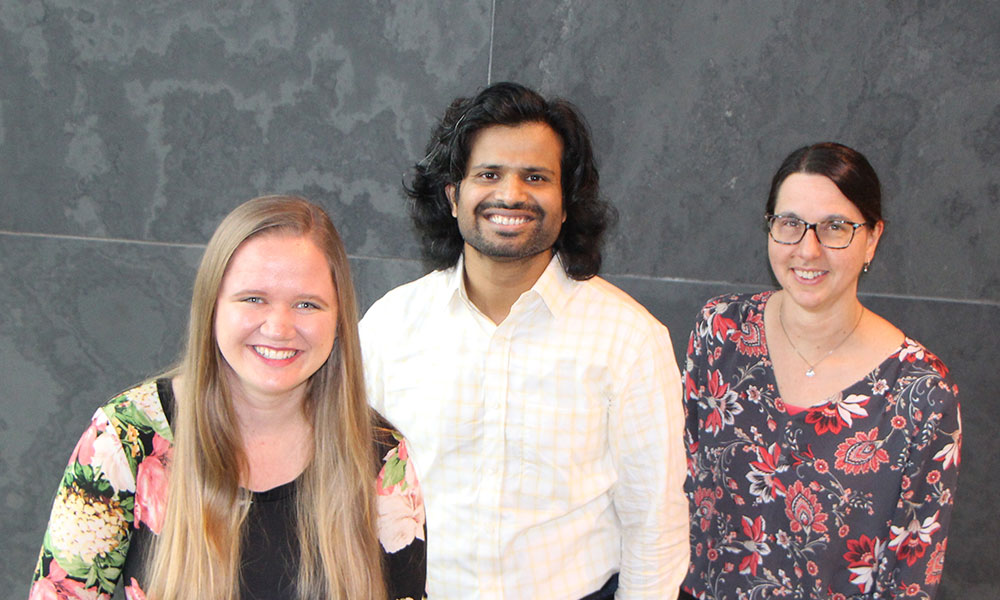Insects affect human lives both positively and negatively, therefore understanding how they interact with their surroundings can help us better manage their effects on our lives. Gustatory receptors (also known as GRs) are a large family of membrane proteins that insects use to sense their surroundings by recognizing small molecules — a process known as chemosensation. Although the role of gustatory receptors in insect chemosensation is well established, the molecular structure and mechanism by which gustatory receptors recognize small tastant molecules remained elusive. In a Cell Reports paper, along with our collaborators at in the Garrity and Theobald labs at Brandeis University and Dr. Richard M Walsh Jr at The Harvard Cryo-EM Center for Structural Biology at Harvard Medical School, we present structures of the fructose receptor from the silk moth Bombyx mori (which is called BmGr9), both in presence and absence of fructose.
The moth fructose receptor, like other gustatory receptors, forms an ion channel in the cellular membrane. This channel is activated by fructose: it is closed in the absence of fructose, and when fructose binds to the receptor’s fructose-binding pocket, the channel opens to let cations cross the cellular membrane, creating an electrical current that activates the neuron. We used cryogenic electron microscopy to determine atomic-level 3D structures of the receptor. Our structures reveal how the fructose receptor changes shape when fructose binds and activates it. Hydrophobic amino acid residues form a gate that blocks the ion pore in the absence of fructose. When fructose binds to the receptor, these gate residues move away and give way to polar residues, thus opening the channel pore to charged ions. The receptor’s binding pocket is lined with polar and aromatic amino acids — forming an ideal surface to bind sugars — and its size is perfect for simple sugars such as fructose.
As a membrane protein, the fructose receptor is surrounded by lipid molecules that line up vertically on the sides of the receptor, as part of the membrane bilayer. However, our structures also show unusually positioned lipid molecules: four lipids lie horizontally in the membrane plane (perpendicular to the orientation of other lipids in the membrane) with their polar headgroups penetrating the walls of the ion pore between each of the four subunits forming the channel. Inspecting previously published cryogenic electron microscopy maps of an odorant receptor (Del Marmol et al. 2021), we find density corresponding to pore-penetrating lipids. This suggests that pore-lining lipids are a common structural feature of insect chemosensory receptors. To investigate the possible roles of these unusually positioned lipids, we used a computer simulation technique known as molecular dynamics which models and mimics motions of atoms and molecules. Results of these simulations showed that these lipid molecules are important for the structural integrity of the fructose receptor’s ion pore, and their absence leads to leakage of water molecules into the lipid membrane surrounding the protein complex.
Most insect species have dozens to hundreds of different but evolutionarily related gustatory and odorant receptors that detect different chemicals, including bitter-tasting molecules, complex sugars, volatile odorant molecules, and even carbon dioxide. We leveraged the vast amount of available insect gustatory receptor sequences to expand our findings on the fructose receptor to other chemosensory receptors. Analyzing protein sequences and AlphaFold2-based structural models of other family members, we found that the amino acids that interact with the pore-penetrating lipids are highly conserved, supporting the idea that lipids will play similar roles across the large chemosensory receptor family. On the other hand, we found variations in the size and chemical properties of the predicted receptor pockets between different receptor subfamilies that are consistent with the properties of the molecules they sense. These results suggest that further computational analyses could therefore help us make predictions about “orphan receptors”, for which we do not know the activating stimulus. We’re excited to continue to explore the structure and function of insect chemosensory receptors both experimentally and computationally.
by Sanket Walujkar and Rachelle Gaudet



